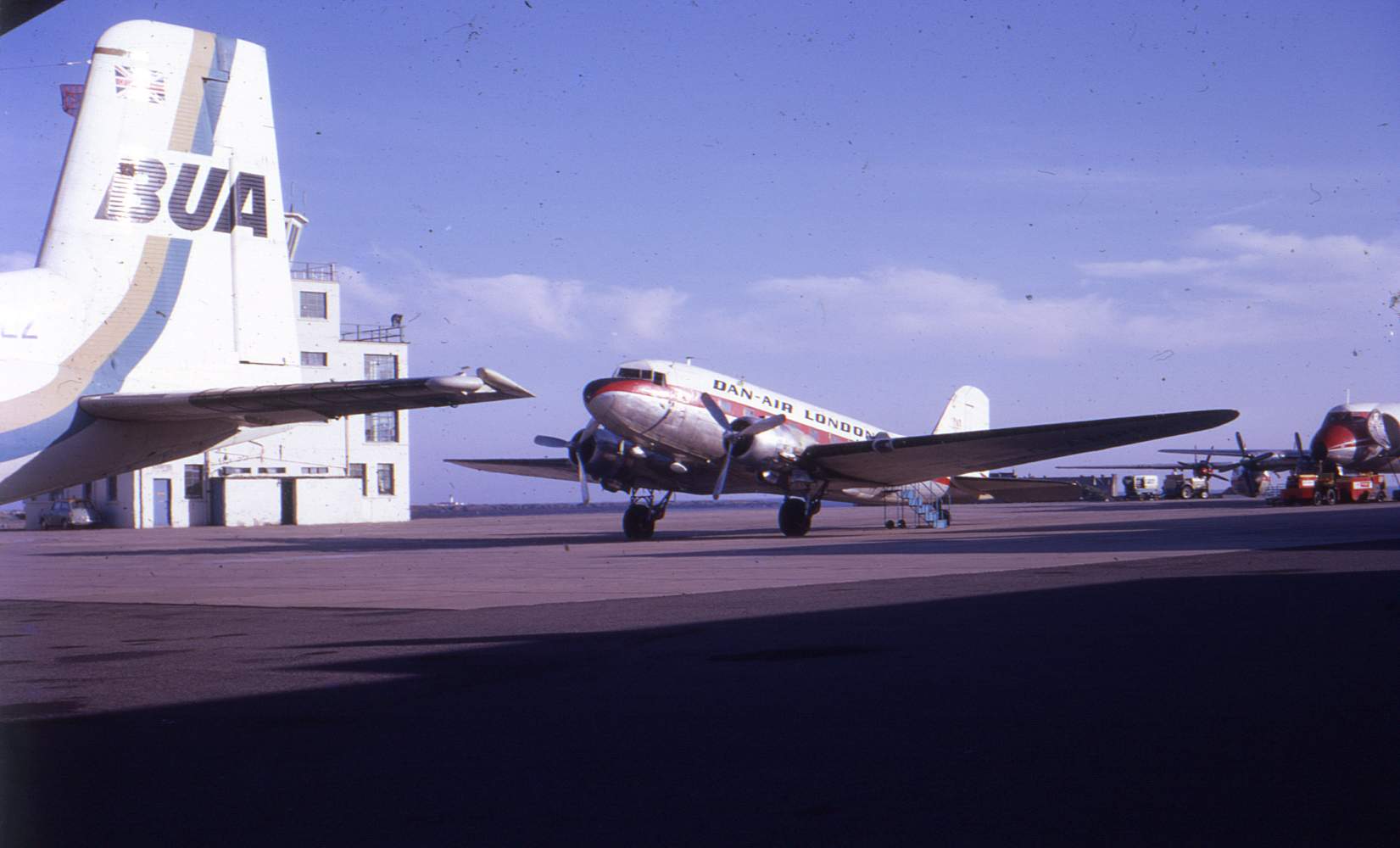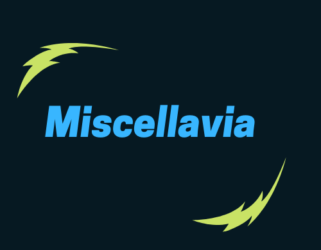In the summer of 1973 I got my dream job, working as a freight loader for Skyways Cargo Airline at Lympne in Kent. Local comedians used to accuse Skyways of permanently having one Dakota in the hanger as they only had five engines for their three aircraft. By 1973, the fleet had grown to four after the arrival of G-APBC from South West Aviation to supplement G-AGYZ, G-AMSM and G-AMWW. The spares inventory needed to be boosted and a donor aircraft was sought. G-AMFV had fallen on hard times after a spell of service with Kestrel Aviation and a Manx-registered company, Belfield Trading (IoM). She was for sale with Shackleton Aviation at Baginton and, following purchase, was delivered to Lympne in late spring 1973 ready for systematic dismantling in the Skyways hanger. Prior to the final coup de grace, the airline generously allowed me to remove the airline name, registration letters and the proudly-worn Union Jack from the fuselage. I started surgery with a pair of tin snips and, I seem to remember, got some assistance from an electric jigsaw. I had been staying in nearby Lympne village and, when I returned home to East Anglia, my landlords kindly packed me, my travel bag and 20 kilos of jagged Dakota panels into their nice new car for the trip to the station. I don’t remember how British Rail reacted or quite how transport of these artefacts worked over the next few years. Suffice to say that the panels have followed me around various flats and houses and, forty-five years later, they are still with me. So what was the past life of G-AMFV which had brought her to the end of her life at a small airfield in south-east England?
C-47A-50-DL serial number 10105 was built at Douglas’s Long Beach plant and delivered to the USAAF as 42-24243 on August 25th 1943. She was supplied to the RAF under the lend/lease arrangement on 3rd October 1943 as FL522. Part of a batch of 150 aircraft destined for British operation in India, this C-47 was one of three flown instead via Bermuda to No5 (Transport) Wing of the South African Air Force where she was allocated the serial 6810. The 58 Dakotas supplied to the SAAF (*1) were mostly used on Pretoria to Cairo shuttle flights ferrying troops and supplies north and personnel and casualties south. Following the invasion of Italy, 5 Wing’s Dakotas followed allied forces from Malta and Cairo to Bari and onwards to Rome by late 1944. The South African C-47s returned home in December 1945 following the cessation of hostilities and, of the 78 on charge in November 1946, many were prepared for disposal at 15 Air Depot, Snake Valley, Pretoria.
G-AMFV, as she was to become, entered civilian service as ZS-DEF, part of a batch of six C-47s sold to Kiersley Airways between March and November 1950. Registered on August 12th 1950, it is also recorded as being owned by Africair and Tropic Air but it seems more likely that she passed virtually directly to Field Aircraft Services of Africa (*2) ready for transfer to their UK base and preparation for BEA service.
ZS-DEF transited through Malta on 23rd October 1950, inbound from El Adem, en route to Field Aircraft Services at Tollerton where she was registered G-AMFV on 15th November 1950. Fields completed the commissioning of ‘FV for BEA and a British CofA was issued on December 11th 1950. Four days later, the aircraft entered service with the state airline at Northolt and much of the following winter was spent crew-training with two other Northolt-based Dakotas.
BEA was building a substantial fleet of Dakotas, some of which had been inherited from Railway Air Services, and needed a way to expand the prevalent 16 or 20 seat configuration to a thirty-plus format. Scottish Aviation were Douglas Aircraft’s official representative in Europe and had already successfully converted many wartime C-47s to civil configuration. They suggested to BEA that they should standardise the airline’s fleet to a ‘Pionair’ specification which embraced the increased capacity, better access and instrument conformity desired by BEA. Modern British avionics were to be added with the layout streamlined by combining the double dials for the twin engines into single dual-needle instruments. Radio equipment was to be tidied up into racks behind the Captain’s seat to facilitate the operation of the VHF and direction-finding systems by the co-pilot without the need for a radio operator. This also meant that the front passenger bulkhead could be moved forward enabling the installation of seven rows of four seats with aft galley and toilet facilities. This 28-seat capacity could be further expanded to 32 seats by removing the galley. A new airstairs and freight-loading door replaced the old-style paratroop-friendly exit door. Externally, the cut-off tail cone, designed to facilitate glider-towing operations, was tidied-up with the fitment of a new streamlined nacelle. Scottish Aviation tendered competitively for the work and five aircraft a month were soon under conversion. The 1950 plan was for the Pionair’s substantially reduced running costs to enable the extension of the operational life of the Dakotas for another five to six years – in the event G-ALTT made the last BEA Pionair flight twelve years later on 19th May 1962 (*3).
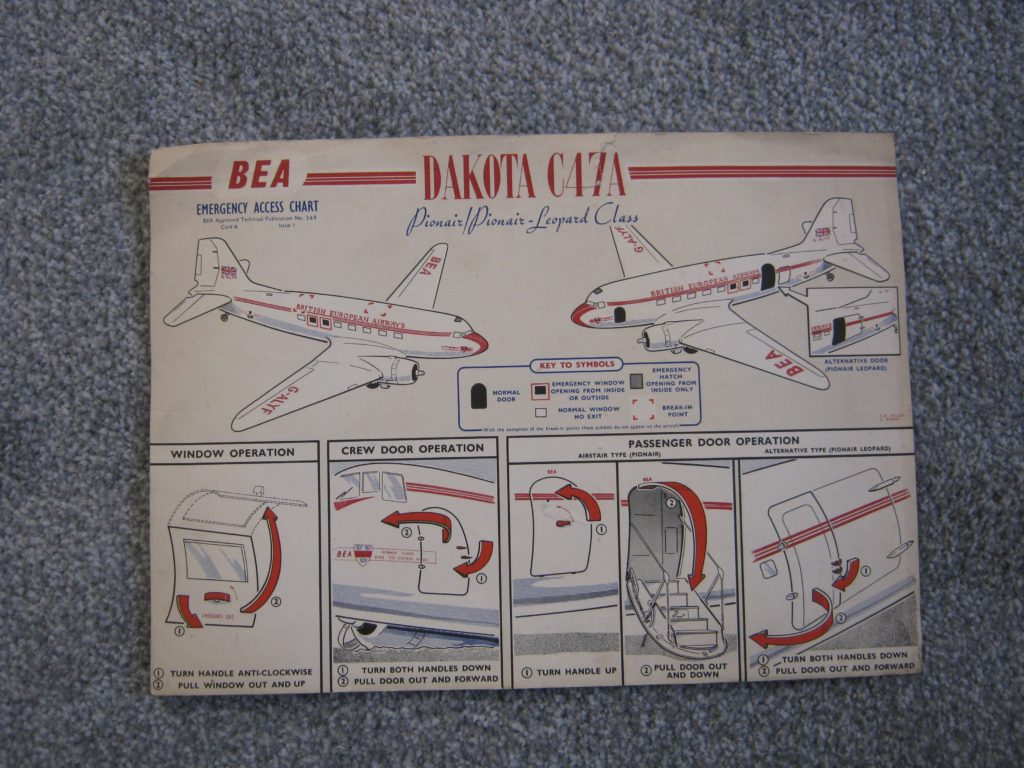
G-AMFV was named after Richard L.Howard-Flanders, the pioneering British aeronautical engineer, and departed Prestwick on delivery to BEA in Renfrew on 6th July 1951.
Although conceived as a state monopoly, BEA maintained relationships with several independent British airlines. The first of those to benefit from a formal associate agreement was Cambrian Airways, a long-established Welsh airline which concentrated on serving the western half of the British Isles. Cambrian signed the agreement with BEA in May 1948 and the bond was strengthened further in 1958 when BEA took a one-third stake in Cambrian. However, the Welsh airline was in serious financial difficulties and, at the end of the 1958 summer season, advertised its entire fleet for sale. The two original Dakotas, G-AMSW and G-AMSX, were sold to Derby Airways but, after discussions with BEA, it was decided that Cambrian would lease three BEA Pionairs for the 1959 season. G-AHCZ arrived in Cardiff on March 2nd 1959 followed by G-AMFV, which flew in from Heathrow on March 16th, and, finally, G-AMJX. March 23rd became the launch date of the rejuvenated Cambrian Airways and G-AMFV started the day’s flying with the Cardiff-Bristol-Bournemouth- Paris Le Bourget route. ‘FV also flew the short-lived Cardiff to Manchester route during March and resumed Liverpool to Guernsey and Jersey flights at the end of the month. The Channel Islands were also a profitable summer destination from Bristol/ Cardiff and the route became a weekend staple for G-AMFV while weekdays were occupied by routes such as Southampton and Paris. Following G-AMFV’s November 7th flight, Channel Island operations from solely Cardiff were paused although they continued as part of a Manchester- Cardiff-Bristol-Jersey service. Charters were also flown and the proud Welsh tradition in Rugby Union brought considerable business for G-AMFV. Supporters were transported to Paris in April 1959, Dublin in March of the following year and Paris in 1961. The Pionairs were serviced by BEA at Heathrow as they remained under lease. However, Cambrian’s three Dakotas had firmly re-established the airline and, in 1960, the leases on all three aircraft were turned into purchases. Acquired on June 22nd 1960, G-AMFV had a recorded total time of 16,587 hours.
Cambrian services continued to cover the western side of the UK with links to Paris, Ireland and the Channel Islands. G-AMFV was the first aircraft to use the new airport at Cork, Ireland during proving flights operated prior to the official opening in October 1961. The airline went on to link Cork with Heathrow, G-AMFV operating the inaugural flight, Bristol and Cardiff. Indeed, 1961 was the year that saw Cambrian’s largest complement of Dakotas with eight aircraft contributing to the airline’s passenger total of almost eighty thousand. The photo below from the Air Britain site, shows a photo taken by Barry Friend in 1960.
Subsequently, the introduction of Viscount turboprops suited Cambrian’s operations to and from the Isle of Man and Liverpool and the DC-3 fleet was reduced. G-AMFV flew her final Cambrian service on December 29th 1962 prior to heading for Field Aircraft Services at Wymeswold for servicing. She was nominally returned to BEA on March 3rd 1963 (*4) ready for service with Gibraltar Airways but, in fact, returned to Cardiff on March 2nd in her new Gibair livery ready for a crew training flight between Rhoose and Prestwick followed by instrument approaches at Glasgow Renfrew.
G-AMFV departed Cardiff in mid-March 1963 en route to Gibraltar for the next seven years in what was to be, arguably, her defining career role (*5). The link with Cambrian remained, with G-AMFV returning to Cardiff for overhaul each year during the winter months. During these spells, Cambrian leased Gibair replacement Pionairs such as G-AGHS and G-ALXL.
Gibraltar Airways had been established in 1931 by one of the Rock’s foremost shipping agents, M.H.Bland, and services between Gibraltar and Tangier had been initiated with Saunders Roe Windhover flying boats. Gibraltar was a key strategic asset during WW2 and a tarmac-surfaced runway was built in 1939 on one of the few pieces of flat land – the racecourse! This enabled land operations and was followed in 1942 by the construction of the famous 09/27 runway which extends out into the Mediterranean. Blands had been BOAC agents for several years but post-war changes in the aviation industry were reflected by the acquisition, in 1947, of a 49% stake in Gibraltar Airways by the new British state airline, BEA. This coincided with the opening of the airfield to civilian services and the company began operating a four-times-a-day link to Tangiers with three ex-BEA Rapides painted in Gibair titles (*6).
By the early sixties, the restricted payload of the Rapides was beginning to tell and a larger airliner was sought. A temporary solution was provided during 1962 with the lease of DC-3s G-ALTT and G-ALXL from BEA’s pool. G-ALTT had flown BEA’s last Pionair service in May 1962 and, following a Check IV with Fields at Wymeswold, had joined Gibair on lease in June of the same year. A more permanent answer involved the purchase of G-AMFV which was overhauled by Scottish Aviation on 6th March 1963 as part of their SALcheck programme prior to delivery to Gibraltar.
The C-47A was painted in the distinctive Gibair colour scheme and was, during the mid sixties, used on the twice-daily service from Gibraltar to Tangier. There were no flights on Tuesdays, but there were morning and evening flights on all other days as well as an extra flight on Wednesday afternoons. The flight, which had taken 21 minutes in the Rapides, nominally took half an hour but the actual duration of the 40-mile trip was more like 10 minutes making it the shortest inter-continental flight in the World. Tickets cost the princely sum of £2-2s-0d one way, £4-4s-0d return.
The photo below shows the early colours with the red tail diamond and the conspicuous Union flag ahead of the windows. The prominent ‘Gibair’ on the fuselage proved too great a temptation for the local wags in Gibraltar and, under cover of darkness, ‘Yo’ was appended to the front of the airline title to give G-AMFV her lasting nickname of ‘Yogibair’. The airfield was still run by the military and RAF wits were credited with the paint job – handiwork which was not appreciated by ‘FV’s regular Captain. Nonetheless, the name followed the Dakota and was, subsequently, applied to the Viscount which replaced it.
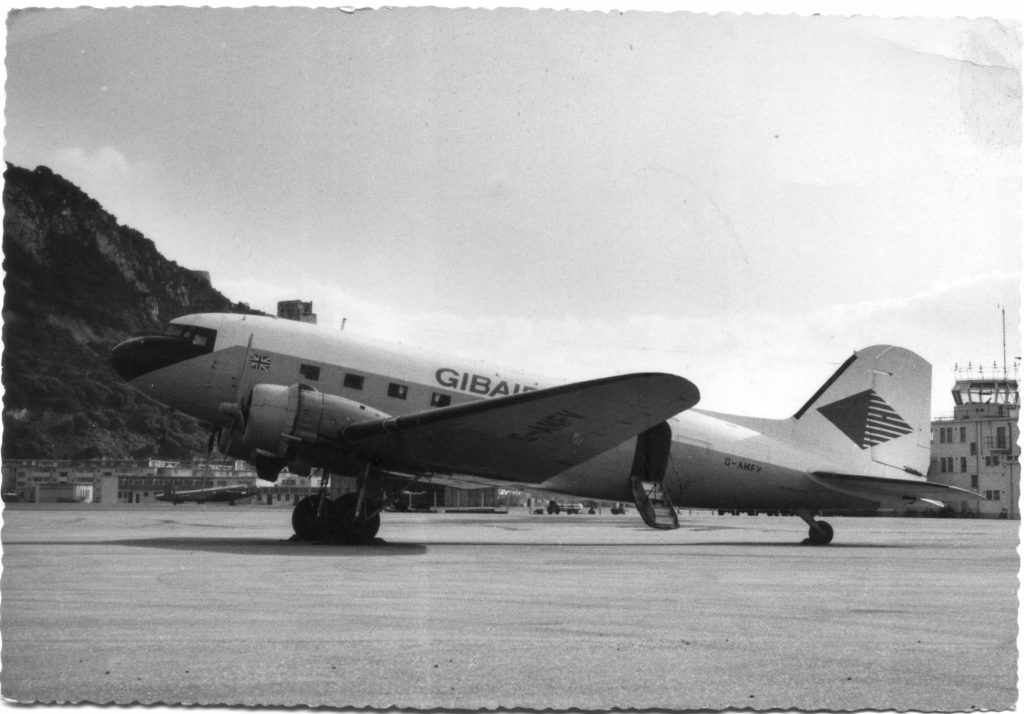
During Gibair’s ownership, G-AMFV received major overhauls back in the UK with, firstly, Cambrian at Rhoose and, subsequently, Fields at Wymeswold. The colour scheme was later modified with a blue cheat line complemented by blue engine nacelles and the Gibair title in blue. The red diamond logo remained on the tail fin and next to the airline name while the Union flag was moved to the aircraft nose.
Gibair were keen to extend their limited network to include destinations in Spain and Morocco but, given the implacable opposition to Gibraltar from Franco’s government extant in Spain in 1969, this proved impossible.
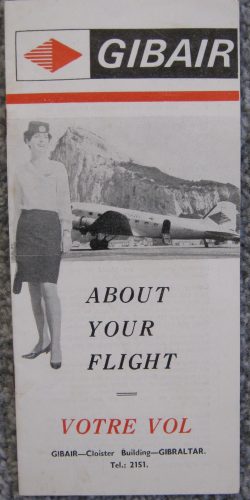
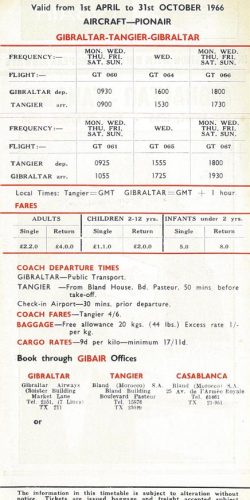
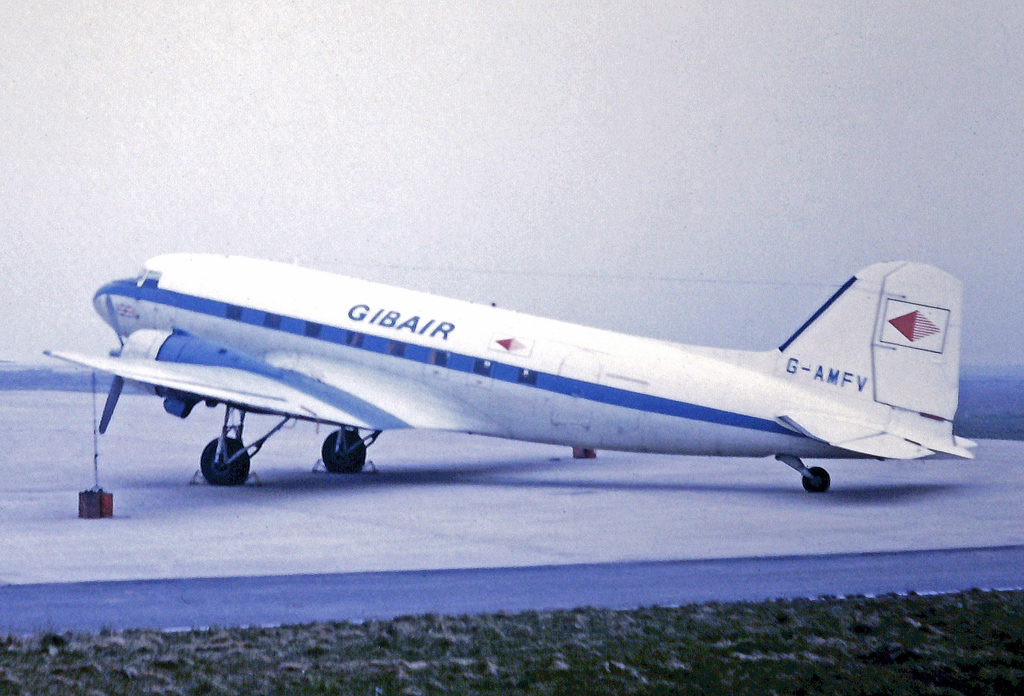
Eventually, Gibraltar Airways decided to replace the ageing G-AMFV with a turboprop Viscount and the last DC-3 flight was made on 29th March 1970. Postcards were issued by the airline to commemorate the end of an era- 10,558 crossings to Tangier had been completed with 229,201 passengers carried. G-AMFV subsequently featured on the 1p stamp in a philatelic set showcasing civil airliners important to Gibraltar.
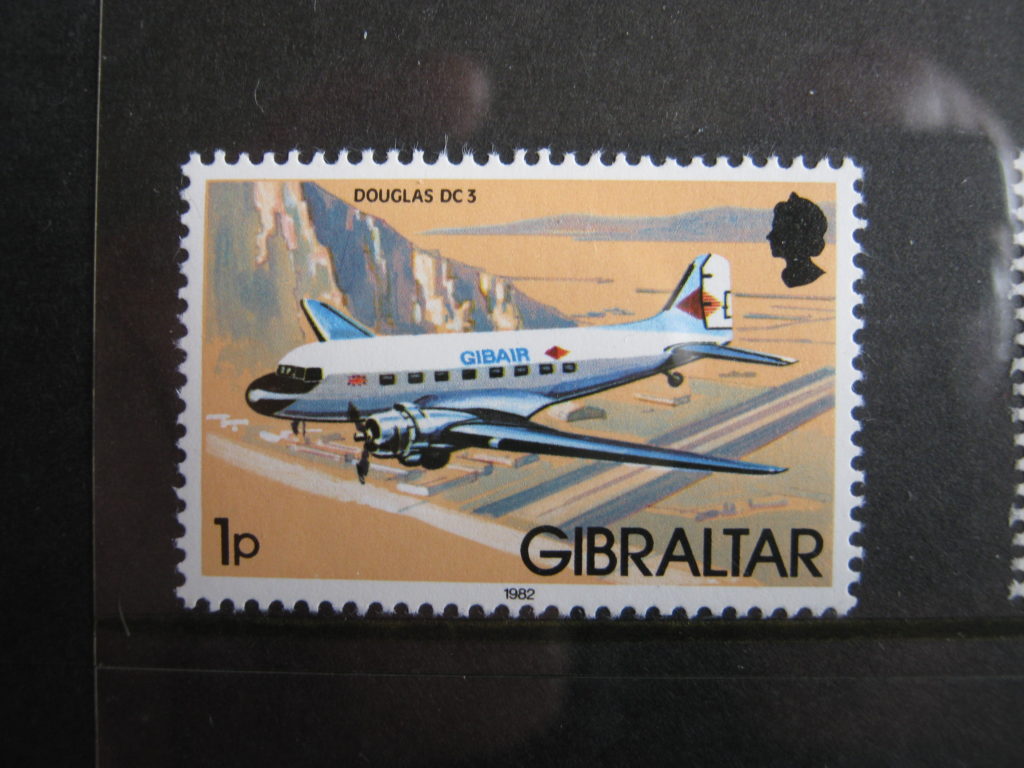

Returning to the UK, G-AMFV was recorded as being owned by C-47 Aviation (*7) on 5th June 1970 but was duly repainted in Fairflight titles at Dan Air’s Lasham facility before undertaking crew training at Hurn and Southampton in early July. Fairflight had been formed by ex-British Eagle employees at Fairoaks with a couple of DH Doves but, by the time Dakota operations had started, they had moved to Biggin Hill and frequently flew from Gatwick. The airline was quick to claim that it could fly charters at less than sixpence per passenger mile (that’s 2.5 new pence!). The acquisition of ‘FV also represented a shift towards larger cargoes and one of the aircraft’s early operations involved moving four dolphins on the London to Mallorca stage of their journey from Miami. The colour scheme employed had barely changed from Gibair’s colours – even the red diamonds were retained, albeit with slight modification. The 36-seat passenger configuration remained useful too, with Fairflight operating numerous charters from Gatwick. However, it was on the cargo side that fortune was due to smile on the airline. G-AMFV had recently been re-equipped with a full cargo door at Fields Castle Donington facility and was well-placed to take advantage of this when a nationwide dock strike commenced in June 1970. On July 16th G-AMFV was despatched to Rotterdam ready for three weeks of intensive operations between the Netherlands and Southend, Stansted and Biggin Hill. Two excellent shots depict this era of operation:
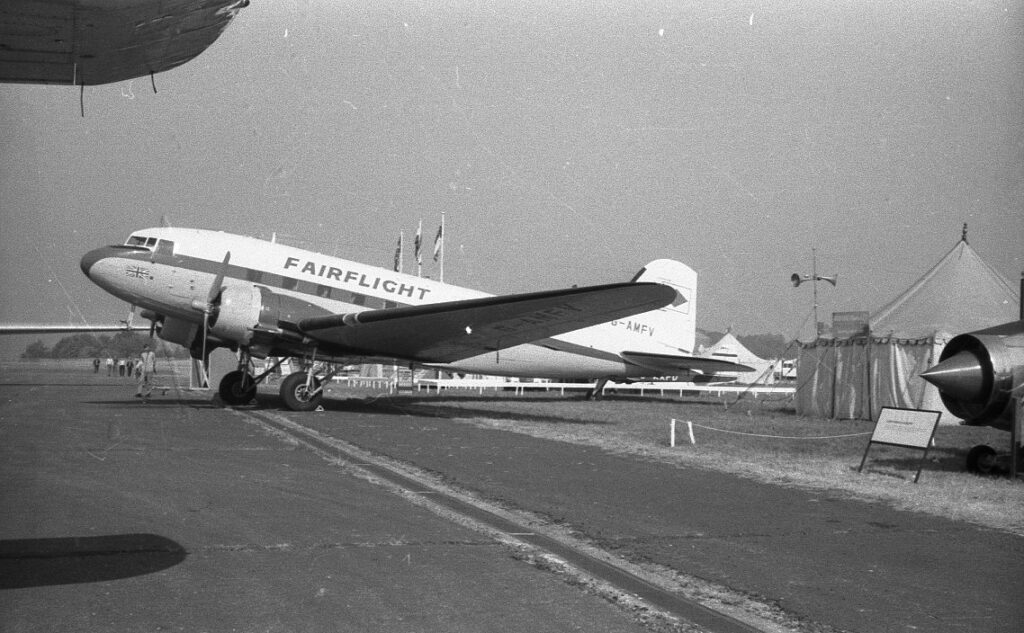
The strike was over by early August 1970 and G-AMFV returned to passenger charters to destinations ranging from Aberdeen to Zurich. Cargo operations ranged even further afield with visits to airfields from Sicily to Prestwick. At the end of a passenger charter from Jersey to Gatwick on August 29th, the undercarriage collapsed while the aircraft was taxiing to the Gatwick terminal. This signalled the end of DC-3 operations by Fairflight and, following repairs, G-AMFV passed to a new Kent-based operator, Kestrel Aviation, domiciled at the old Silver City airport at Lydd. While operations officially commenced on October 8th 1970, Dan Air were still arranging to ferry the aircraft to their Lasham maintenance base for repairs. A new wing was awaited from the USA and, in the interim, the port wing from Dan Air’s G-AMPP was fitted along with the nosecone from G-AMSU ( elsewhere, Miscellavia modules will show photos of the two Dan Air Dakotas following parts donation). G-AMFV flew from Gatwick to Lasham on 16th October 1970 and was repaired, overhauled and resprayed. Named ‘Maid of Kent’, the Gibair blue cheat line and nacelles were both repainted orange and a Kestrel logo was added. Following an extensive bout of crew training during December 1970 and the following January, ad hoc passenger and cargo charter work from Lydd commenced on January 24th 1971. This operation involved ferrying a replacement engine from Gatwick to Palma, Mallorca, for Laker Airways. There were also shellfish charters from the Hebrides and G-AMFV transited through Prestwick in Kestrel colours on February 10th. However, the isolated location of their home base out on the Romney marshes proved too remote and, on the last day of February, the company moved to East Midlands Airport. The Ford Motor Company kept many of the UK freight airlines busy during the mid 1970s with Skyways/ Air Freight doing particularly well transporting components. Kestrel also benefited from Ford requirements for freight between Antwerp and Cologne and Liverpool, Cardiff and Birmingham. Photographs show that the immaculate G-AMFV operated by Gibair was beginning to look a little tatty around the edges. The airstairs had been replaced by a standard C-47 freight door even though the aircraft was popular for weekend pleasure trips from East Midlands. G-AMFV was noted to be busy around Britain during the spring and summer of 1971 (*8) and a second Dakota was sourced from Delta Air Transport in Belgium. OO-CBU, the one-time G-AKNM, arrived at Castle Donington on 30th April 1971 (*9) inbound from Antwerp but never actually entered service with Kestrel. Indeed, work was scarce over the winter of 1971 and the Ford charters and occasional passenger charters up and down the North Sea coast were only sufficient to keep a single Dakota occupied. G-AMFV was noted at Liverpool on January 15th and Southend on 22nd February. However, the airline retained expansion plans which were focused on turboprop equipment and, on March 1st 1972, the ex-British Midland Viscount G-AVJB joined the fleet. Bizarrely, the Viscount disposal left BMA short of capacity and they frequently employed their East Midlands neighbour to operate services for them. Dan Air and North East also hired-in Kestrel while the airline planned its own passenger services. Applications were made to the ATLB to link East Midlands with Teesside, Ronaldsway, Ostend, Exeter and Hurn.
Freight operations were boosted by a further port strike in July 1972 and Kestrel’s Viscount was involved in a regular cigarette delivery operation from a temporary base at Southend Airport to Belfast. By early August the strike was over and the Viscount returned to Castle Donington to concentrate on flying scheduled services for Dan Air. The lease on G-AMFV was transferred on 28th August 1972 to Belfield Trading (IoM), a company formed by the 23-year old Duncan John Belfield Baker. The aircraft was delivered to the new owner in Dublin on September 23rd 1972 with small changes made to the colour scheme. Belfield titles replaced the previous owner’s name but the Kestrel symbol was retained on the orange tail. The aircraft was noted at Shannon on 25th September and early operations were concentrated on Ireland. Duncan Baker was a very colourful character prominent in operating old airliners on charter operations in the early seventies (*10). Operations with G-AMFV were reputedly designed to capitalise on the growing requirements of the North Sea oil industry and, on November 18th 1972, the aircraft was flown to White Waltham airfield in Buckinghamshire. Piloting the aircraft was the new owner, Captain Baker, under instruction from a Fairey Surveys DC-3 Captain. Further crew training took place over the next three days from the grass airfield. Refuelling proved more difficult than anticipated – after all, the Fairey fleet operated from here. However, once fuelling had been completed, the aircraft had to be manoeuvred astern prior to starting the engines. Initial attempts to push her backwards manually were abandoned after the patrons of the Aero Club bar proved unequal to the task! Eventually, a Land Rover equipped with one of Fairey’s towbars accomplished the task and the DC-3 was able to depart for Lasham for maintenance work.
Repositioning to Gatwick at the end of November, ‘FV headed on to Liverpool and then back to Dublin. The aircraft remained at Dublin during december and January 1973 before C-47 Aviation sold her to Baginton-based broker Shackleton Aviation on April 11th. She was delivered to Coventry on April 13th and she was bought by her final owner, Air Freight Ltd., during early June. Ferried to Lympne on June 6th, she was moved into the old Skyways maintenance hanger where cannibalisation work commenced swiftly. By the end of the summer, G-AMFV had been stripped of usable parts and moved outside as scrap. Lympne remained in use as an airport until the following year and, as a light aircraft strip, for another ten years. However, by October 1974, the famous sound of Pratt and Whitney engines had departed from Lympne and, following closure in 1984, the grass runways were lifted and sold as turf.
Air Britain have some excellent pictures of G-AMFV with its later operators on their ABpic site:
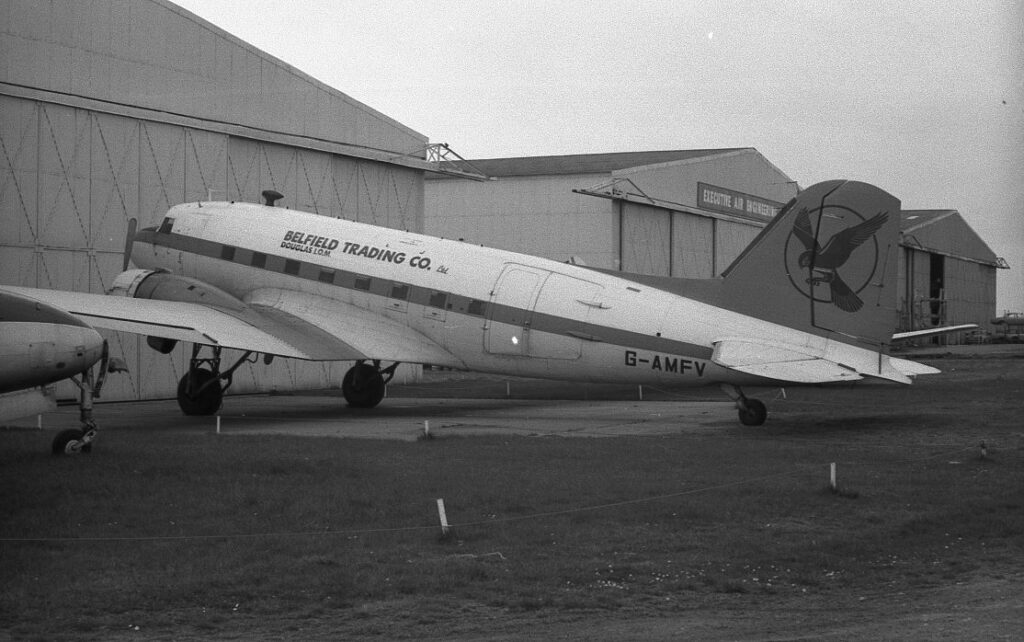
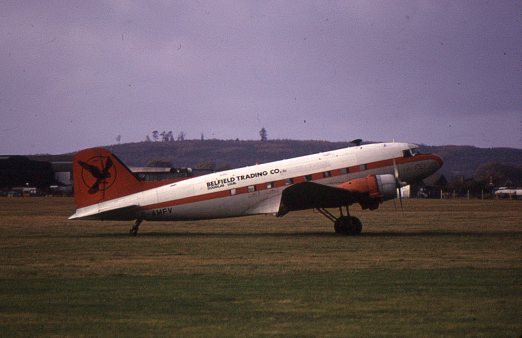


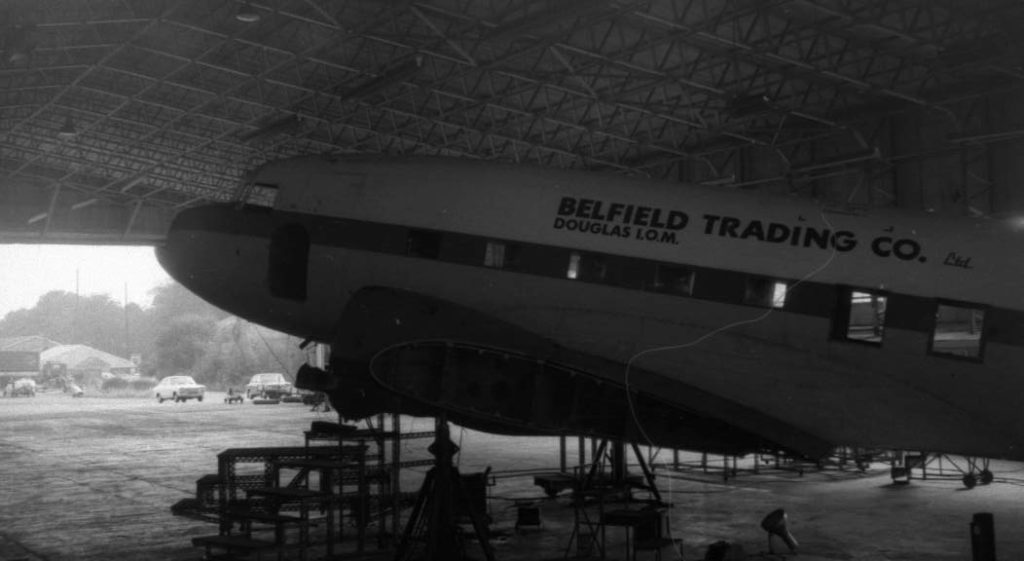
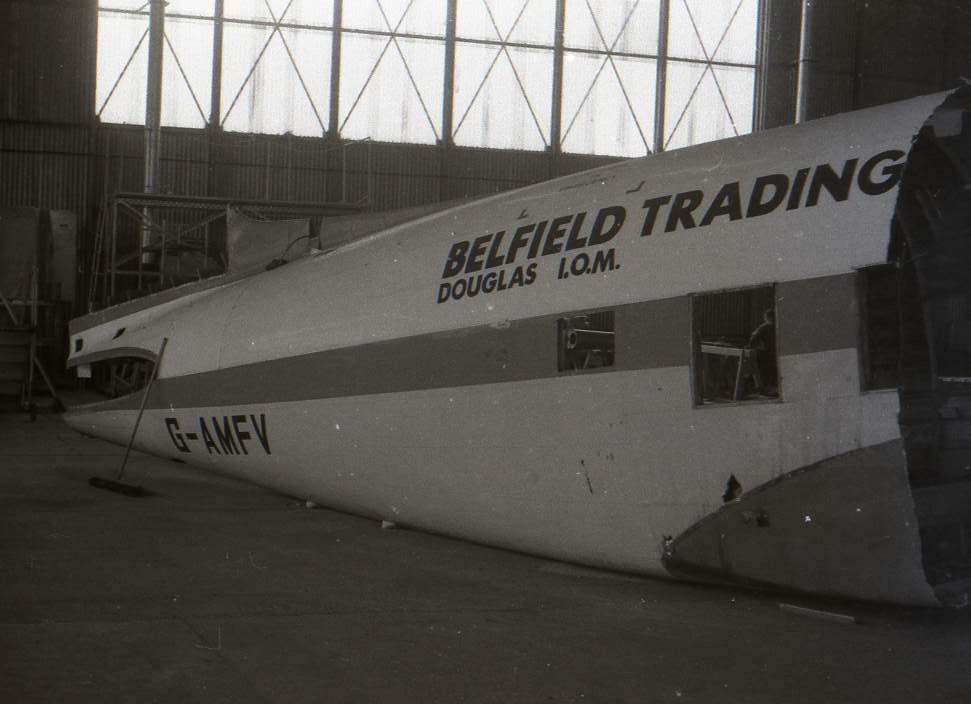
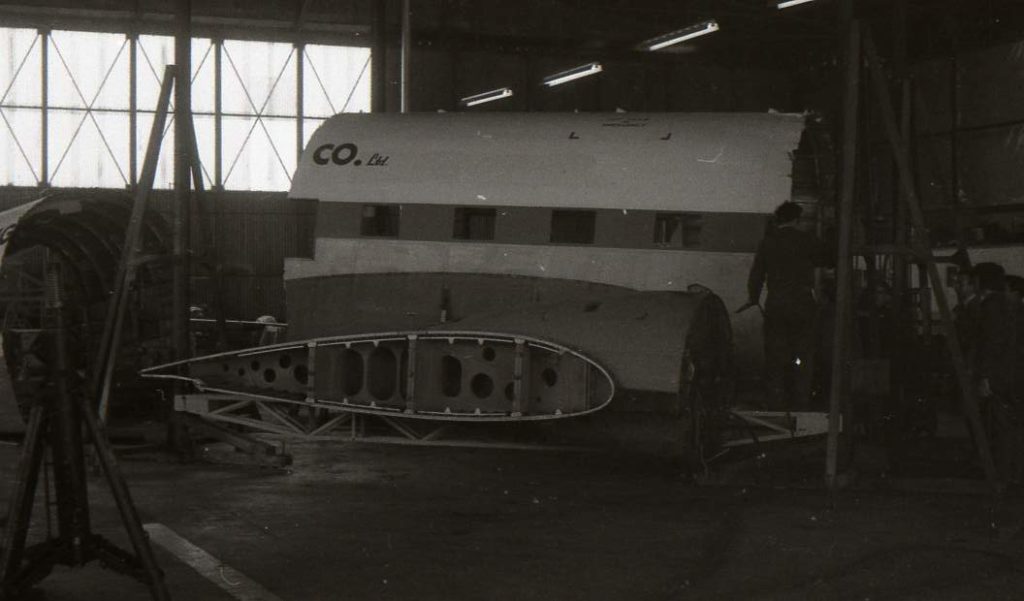
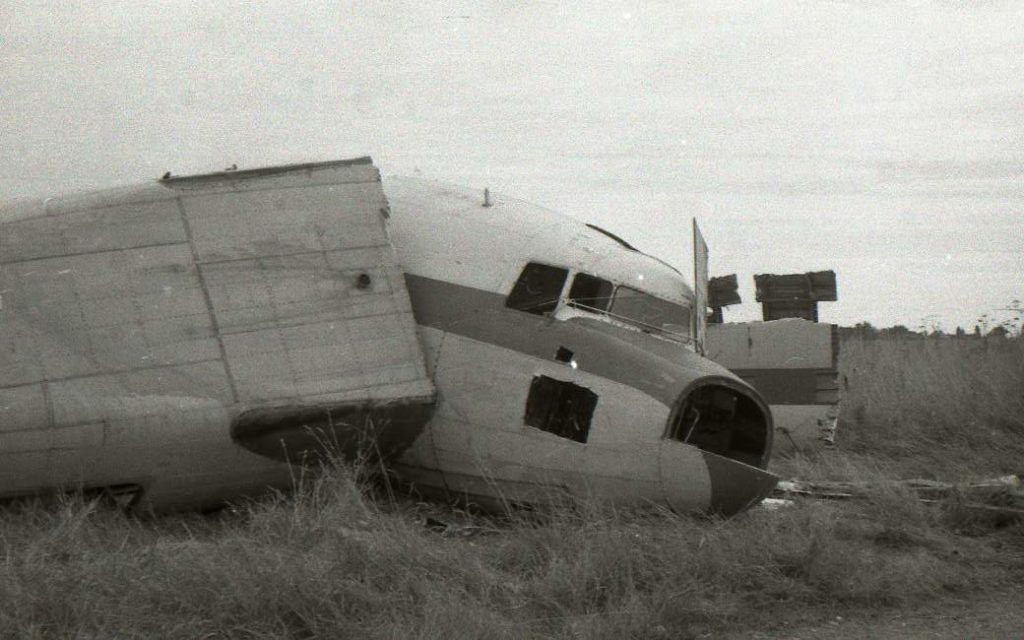
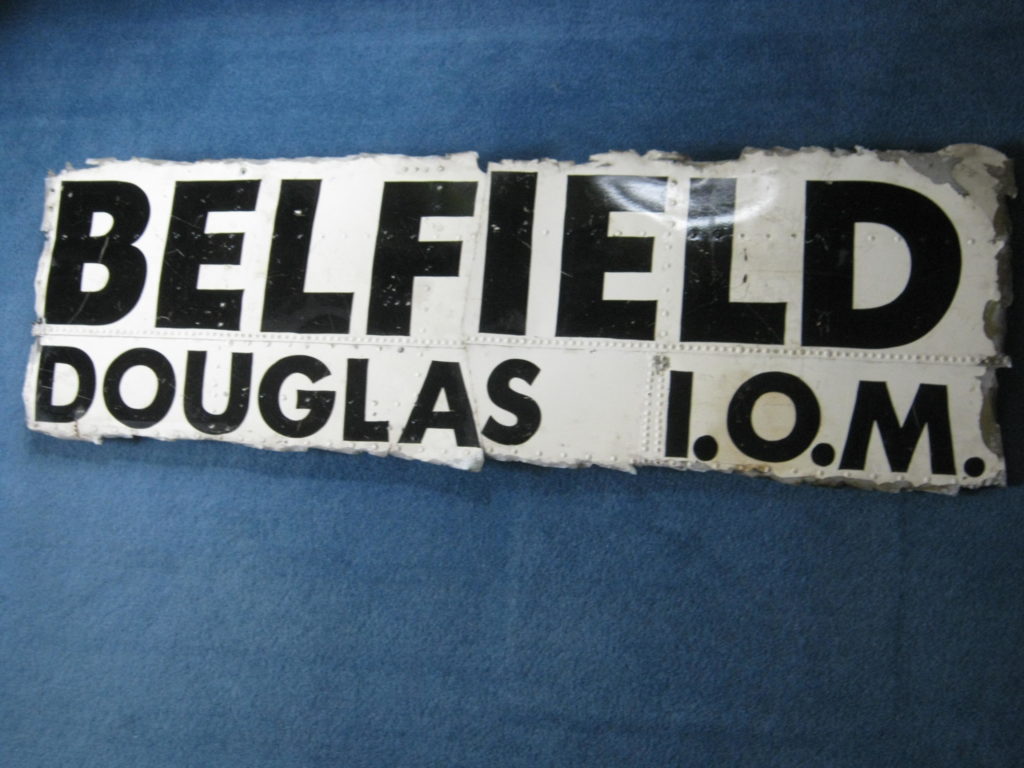
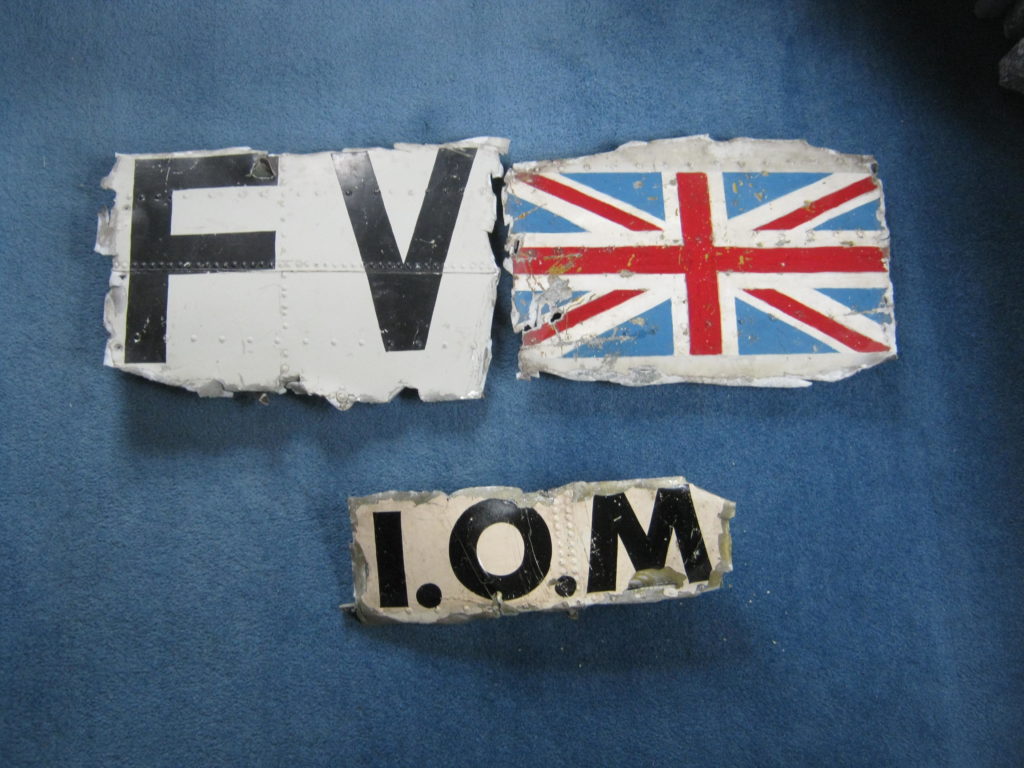
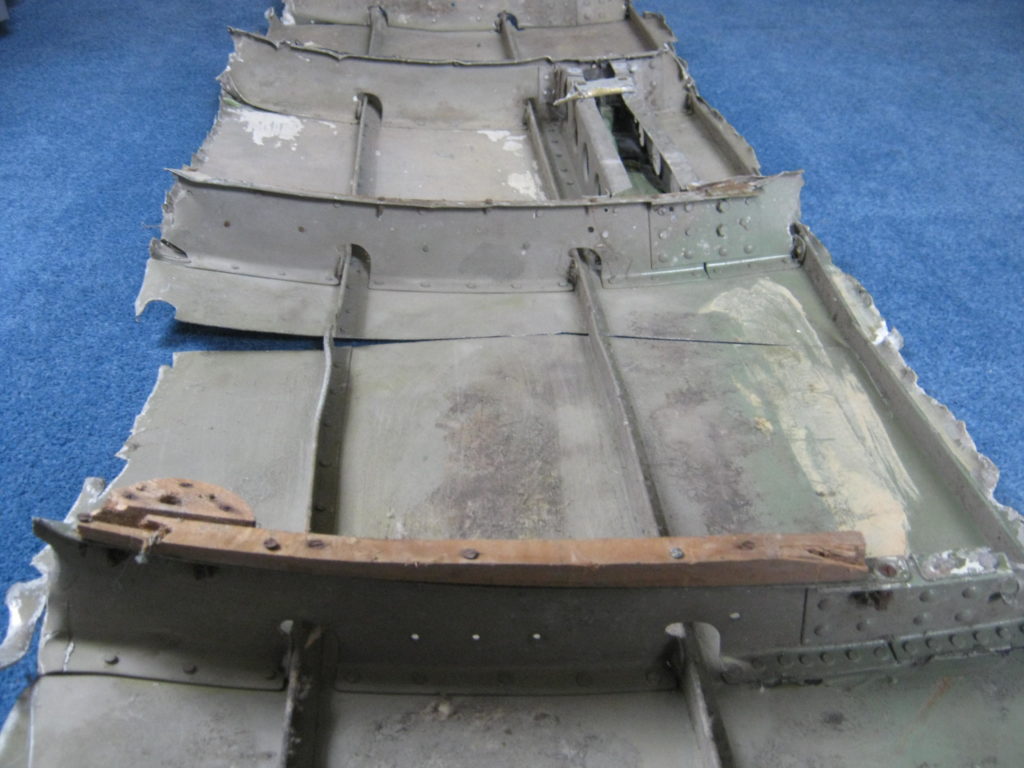
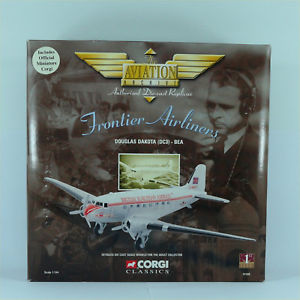
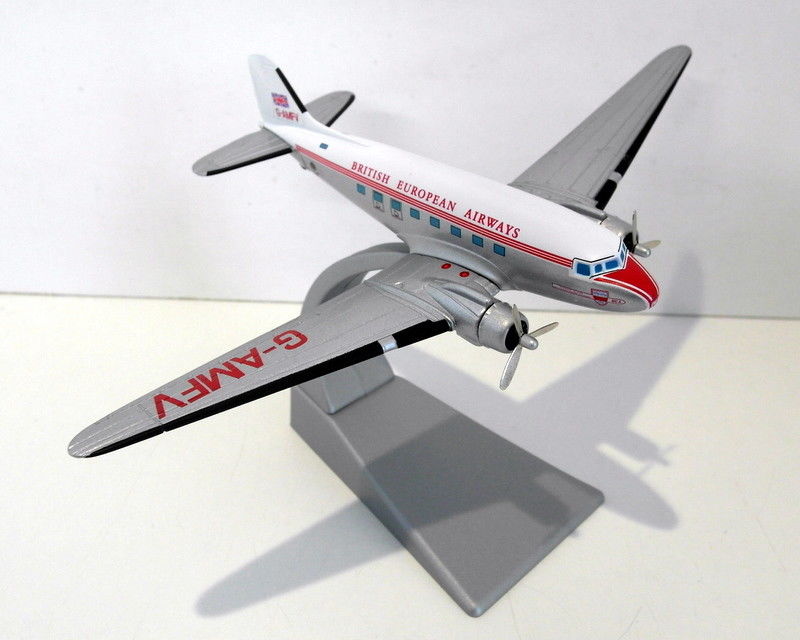
Footnotes:
1. A further 26 Dakotas were later supplied to SAAF via 28 Squadron which had operated in North Africa.
2. Kiersley Aviation is not to be confused with Kearsley Airways although they seem to have operated around the same time. Kiersley may well have been associated with the Aircraft Operating Company of London which performed aerial photography in Africa during the 1930s and spawned Field’s Aircraft Services of Africa immediately post-war with the participation of the Hunting group of companies.
3. An excellent feature on the Pionair conversion programme appears in Flight International for 18th January 1951. It can be found online at the excellent Flightglobal archive.
4. From the registration document on CAA’s G-INFO website.
5. My interest in G-AMFV dates from this time as one of my school mate’s parents worked in Gibraltar and supplied photos and reports of Gibraltar’s own airliner.
6. Rapides G-AERN, G-AGEE, G-AIHN were supplied in November 1947 followed by G-AFOI in summer 1948, G-AGSK in December 1952 and G-AGUU and G-AJSK in January 1953. These were mostly aircraft inherited by BEA as it absorbed airlines such as Scottish Airways and Great Western & Southern Airlines.
7. From the Certificate of Registration. It seems likely that C47 Aviation was the owner of G-AMFV and that the subsequent operators such as Kestrel and Belfield only dry-leased the aircraft. C47 Aviation appear to have been connected with REFA of Wood Lane, Rothwell, in Yorkshire.
8. G-AMFV was noted at Southend on April 22nd, Dublin on 27th April 1971, Liverpool on May 8th, Edinburgh on May 26th, Belfast on July 10th, Berlin Templehof on July 18th and 20th, Manchester on August 1st, Lasham (probably for overhaul by Dan Air) on August 10th, the grass field at Ipswich on 28th August, Prestwick on 1st September, Belfast on 5th December and Southend on 11th (Mostly via Air Britain and LAAS publications). Bournemouth and Coventry were visited often with flower and vegetable flights operated from the Channel islands to East Midlands.
9. OO-CBU had been a Sabena aircraft for many years before sale to Delta Air Transport in April 1969. Painted with a pale yellow cheat line which was atypical for Delta, the aircraft operated KLM freight services. Its last flight was made to East Midlands Airport on 30th April 1971 and it was removed from the Belgian register 10 days later. After a spell in the hanger in July 1971, it was moved outside and, by June 1972, Delta titles had been painted-out. It was eventually broken-up in January 1973 and is believed to have been taken to a scrap yard in Rothwell, Yorkshire. As an aside, G-AMFV’s owners, C47 Aviation, were based at the R.E.F.A. site, Wood Lane, Rothwell and Pratt & Whitney R1830-92 engines were for sale from the Wood Lane site in ‘Flight International’ in February 1972.
10. Duncan Baker was involved in many exciting ventures during the 1970s with his Lanzair Constellation operations attracting the attentions of African governments, the US State Department and propliner enthusiasts worldwide.
references:
The Douglas DC-3 and its predecessors, JMG Gradidge, published 1984 by Air Britain (Historians). Essential facts from this tome and the update volumes.
LAAS International DC-3 Production List Volume 3, S.Wilkinson, November 1968. The excellent and authoritative text from LAAS.
British Military Aircraft Serials 1912-1966, Bruce Robertson, Ian Allan, 1964.
Britsh Independent Airlines, Tony Merton Jones, The Aviation Hobby Shop, 2000.
Propliner – The excellent article by Tony Merton-Jones in Propliner #19, Autumn 1983 provided much detail on Cambrian operations. When I was 75% through writing this article, I discovered Tony’s detailed history of this very aircraft in Propliner #69! Hopefully, I have added some further detail.
Glasgow’s Airport, Dugald Cameron, 1990.
The History of British European Airways, Charles Woodley, 2006.
Born of Adversity, Guy Halford-Macleod, 2014.
Air Britain Digest, LAAS publications, Ian Allan’s Civil Aircraft Markings, Air Pictorial November 1970.
www.planelogger.com
www.abpic.co.uk
www.airteamimages.com
www.planepictures.net
www.pprune.org
www.adastron.com
www.flightglobal.com
http://www.dc-3.co.za/dc-3-south-african-operators.html
http://wwwaviationinmalta.com
www.saadonline.co.uk
www.briantrichards.com
http://publicapps.caa.co.uk/docs/HistoricalMaterial/G-AMFV-1.pdf
http://cgibin.rcn.com/jeremy.k/cgi-bin/gzUsafSearch.pl?target=42-24215&content=
Hits: 1306
